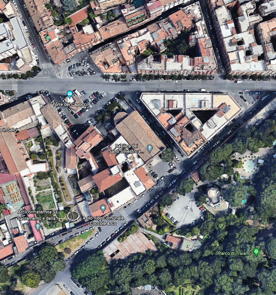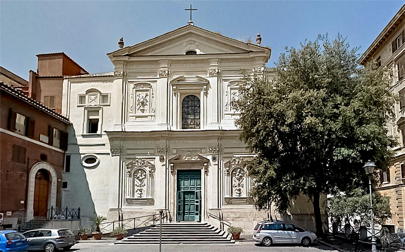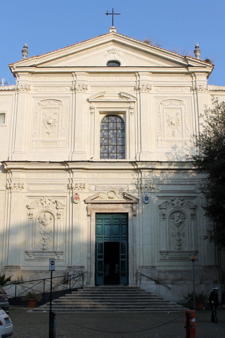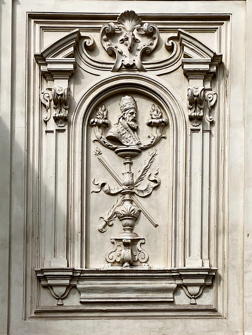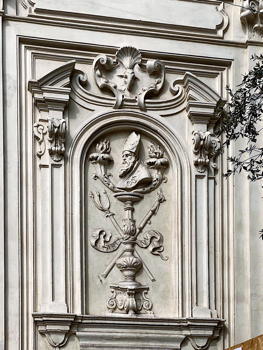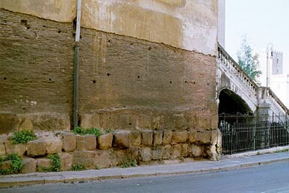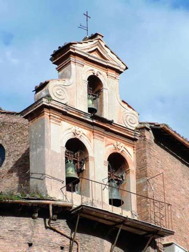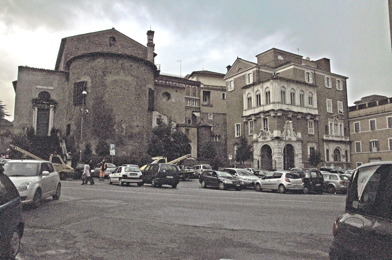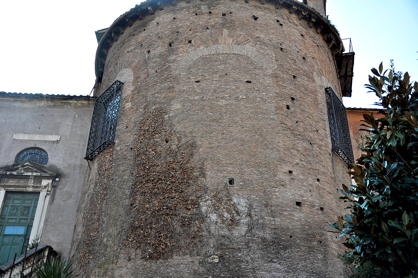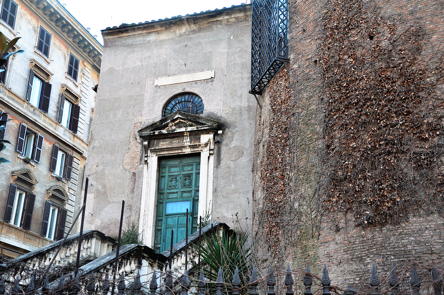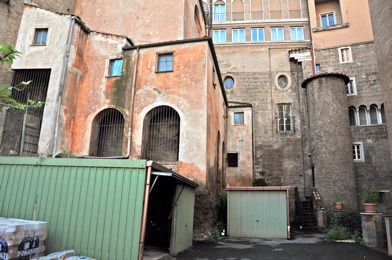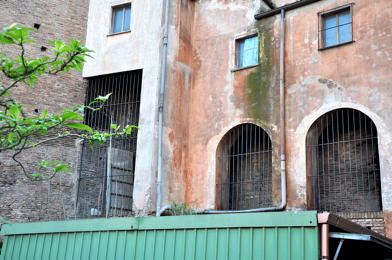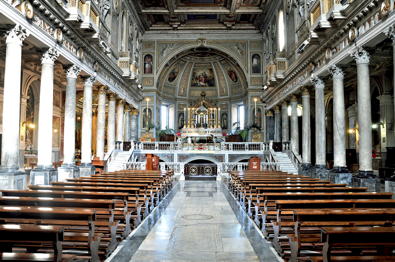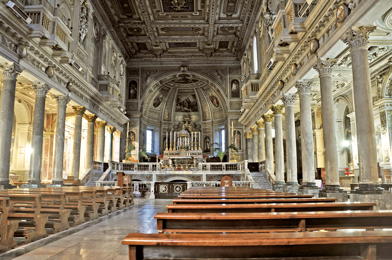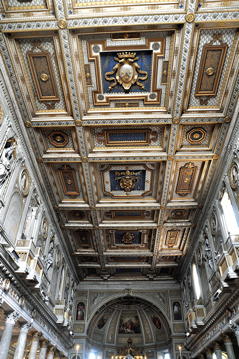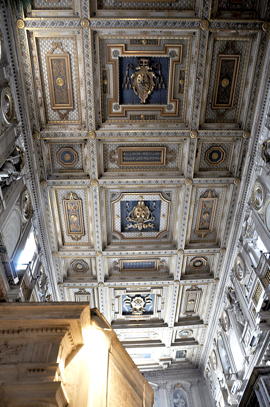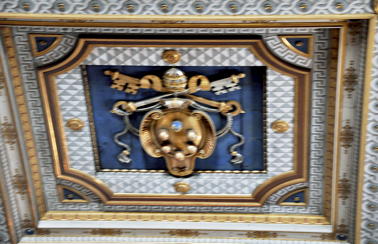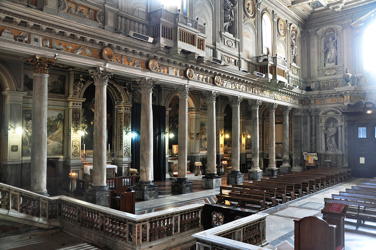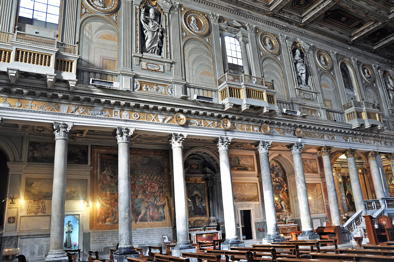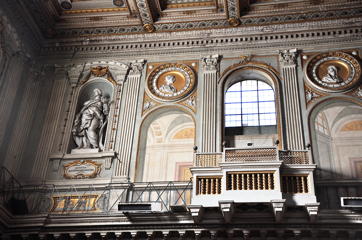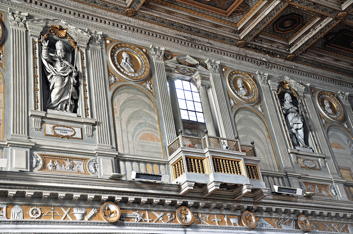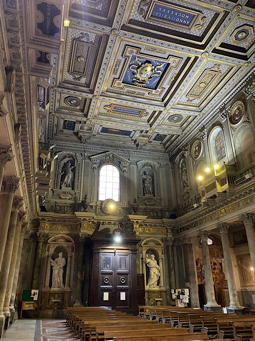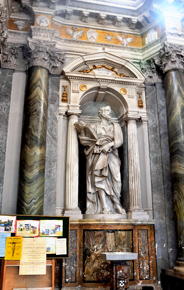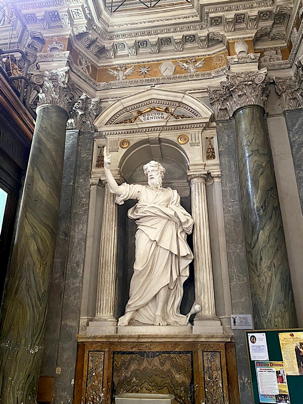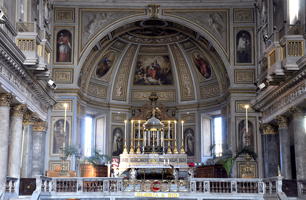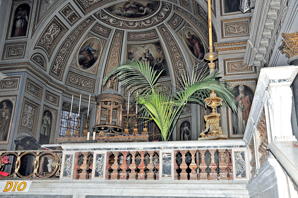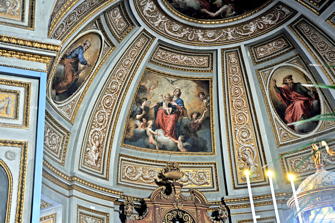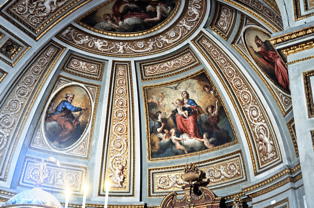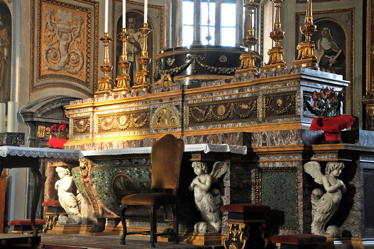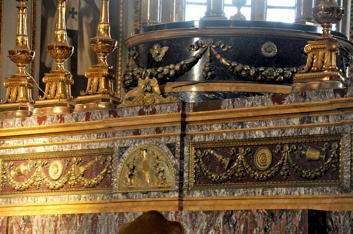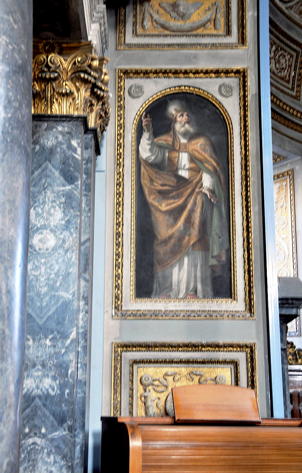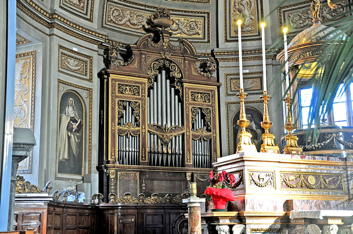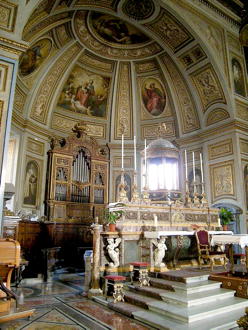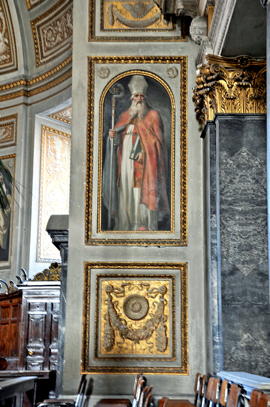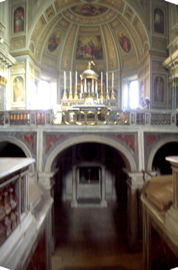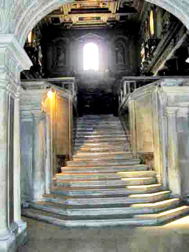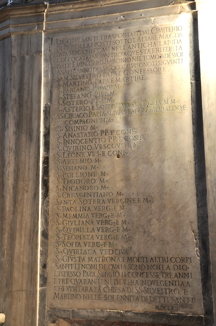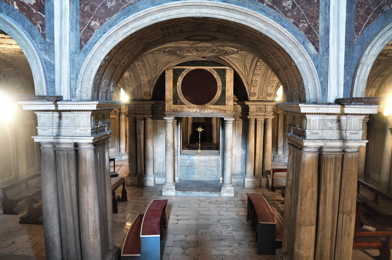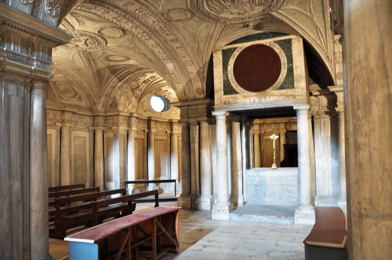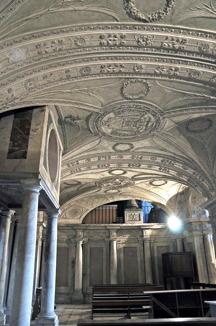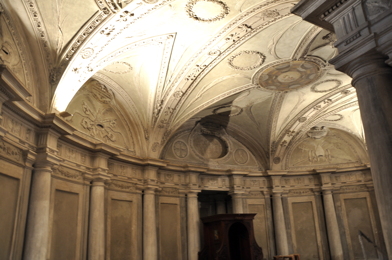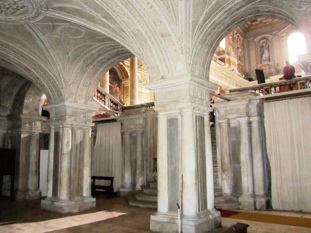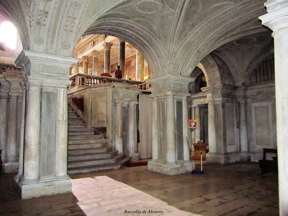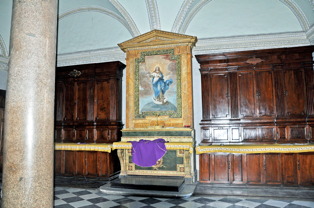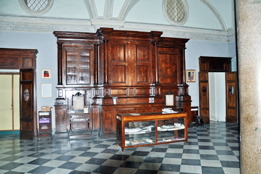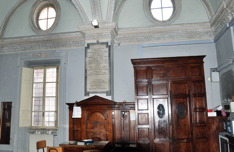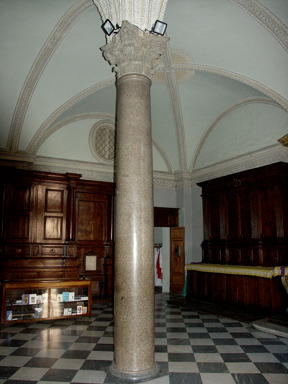San Martino ai Monti is a 9th century minor basilica, a parish and titular church on ancient foundations dedicated to
St Martin, 4th century Bishop of Tours.
The church is also known as
Santi Silvestro e Martino ai Monti,
in the Rione Monti neighbourhood.
For reference, a plan of the church is available
here.
The basilica was founded by
Pope St. Sylvester I (314-335) over a terrain donated by a priest named Equitius (since the
name of Titulus Equitii) in the 4th century. At the beginning it was an oratory devoted to all the martyrs.
It was the site of the preparatory meetings in 324 for the Council of Nicaea in 325 and the site of a diocesan
Council over which both Constantine and Sylvester presided. It was here, in fact, that the Nicene Creed was
first proclaimed in Rome.
The current church of San Martino ai Monti dates from the Carolingian era, but a 3rd century pillared hall
has been located below and adjacent to the later church.
In 500 the church was rebuilt by
Pope Symmachus (498-514) and dedicated to Saints Martin of Tours and Pope
Sylvester I. At that time the church was elevated and the first oratory become subterranean. The crypt
shows signs of the ancient alternate name of the church as "San Martino in Thermis."
The church was reconstructed by
Pope Hadrian I
in 772 and by
Pope Sergius II in 845. The basilical plan was preserved,
and columns from the first church were reused. Pope Sergius had many relics of early martyrs brought here from
the catacombs, which were threatened by Muslim Saracens. The most important are the relics of
Sts Artemius, Paulina and Sisinnius, which were translated from the Catacomb of Priscilla and now
lie under the high altar.
The church has been restored several times since.
Prior Giovanni Antonio Filippini (d. 1657) restored and redecorated the Basilica which involved the collatoration
of a number of artists. The landscape frescoes by
Gaspard Dughet are unique as church decoration, although in a bad state of preservation. The work was completed by 1650
according to an inscription above the main door inside the church. In 1570
St Charles Borromeus
had some alterations made, in paticular the ceiling.
The church is now served by the Calced Carmelites. It was granted to them in 1299 by
Pope Boniface VIII.
Their ownership was confirmed in 1559.
It has been a titular church since 1299. In 1921, Achille Ratti became titular of the church. The next year,
he was elected pope and took the name
Pius XI. Giovanni Battista Montini became titular of the church in 1958.
He was elected pope in 1963, taking the name
Paul VI.
